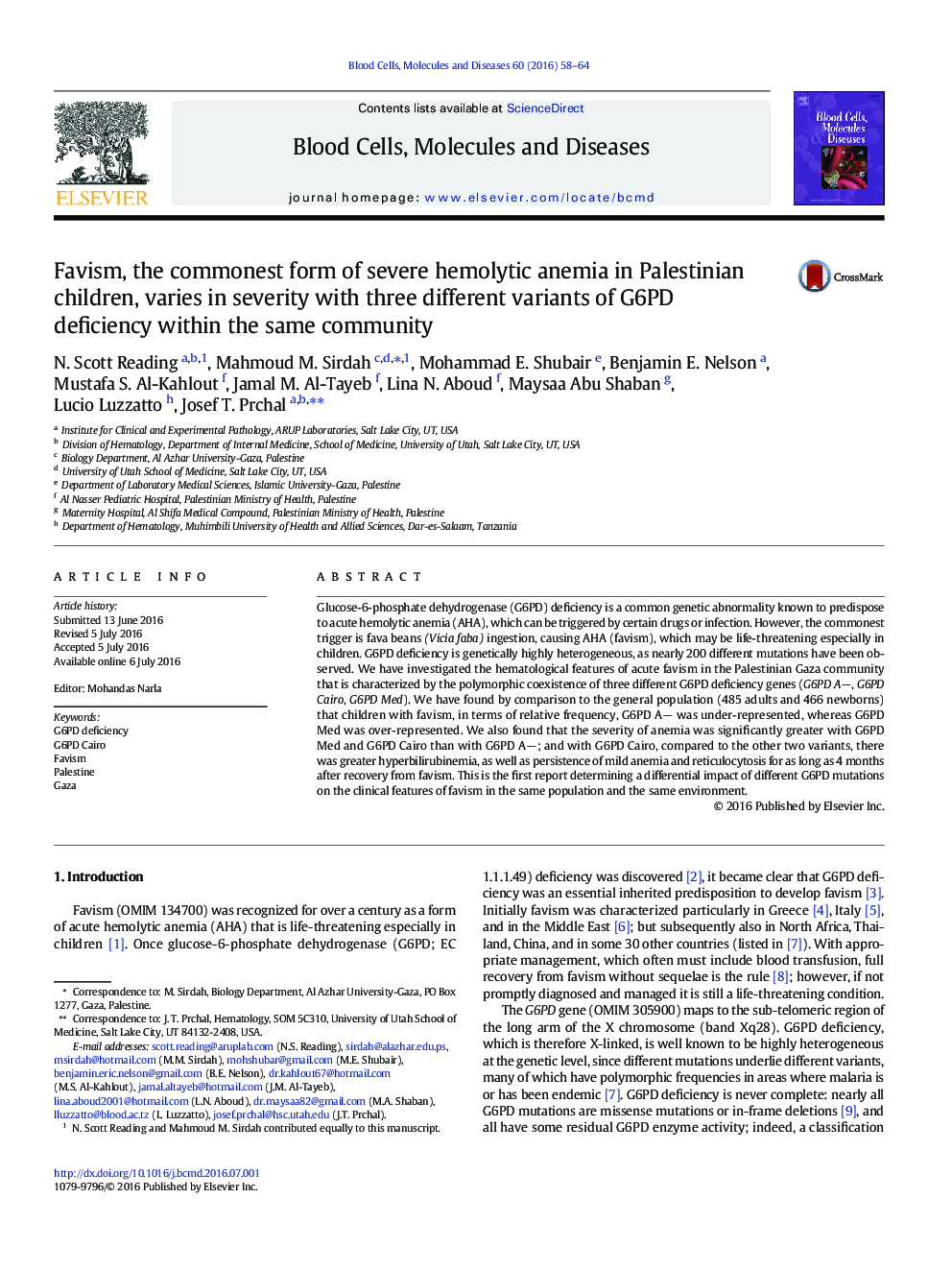| Article ID | Journal | Published Year | Pages | File Type |
|---|---|---|---|---|
| 2827058 | Blood Cells, Molecules, and Diseases | 2016 | 7 Pages |
Glucose-6-phosphate dehydrogenase (G6PD) deficiency is a common genetic abnormality known to predispose to acute hemolytic anemia (AHA), which can be triggered by certain drugs or infection. However, the commonest trigger is fava beans (Vicia faba) ingestion, causing AHA (favism), which may be life-threatening especially in children. G6PD deficiency is genetically highly heterogeneous, as nearly 200 different mutations have been observed. We have investigated the hematological features of acute favism in the Palestinian Gaza community that is characterized by the polymorphic coexistence of three different G6PD deficiency genes (G6PD A−, G6PD Cairo, G6PD Med). We have found by comparison to the general population (485 adults and 466 newborns) that children with favism, in terms of relative frequency, G6PD A− was under-represented, whereas G6PD Med was over-represented. We also found that the severity of anemia was significantly greater with G6PD Med and G6PD Cairo than with G6PD A−; and with G6PD Cairo, compared to the other two variants, there was greater hyperbilirubinemia, as well as persistence of mild anemia and reticulocytosis for as long as 4 months after recovery from favism. This is the first report determining a differential impact of different G6PD mutations on the clinical features of favism in the same population and the same environment.
